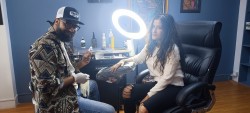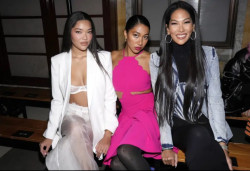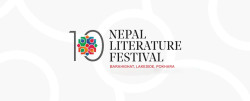Arts
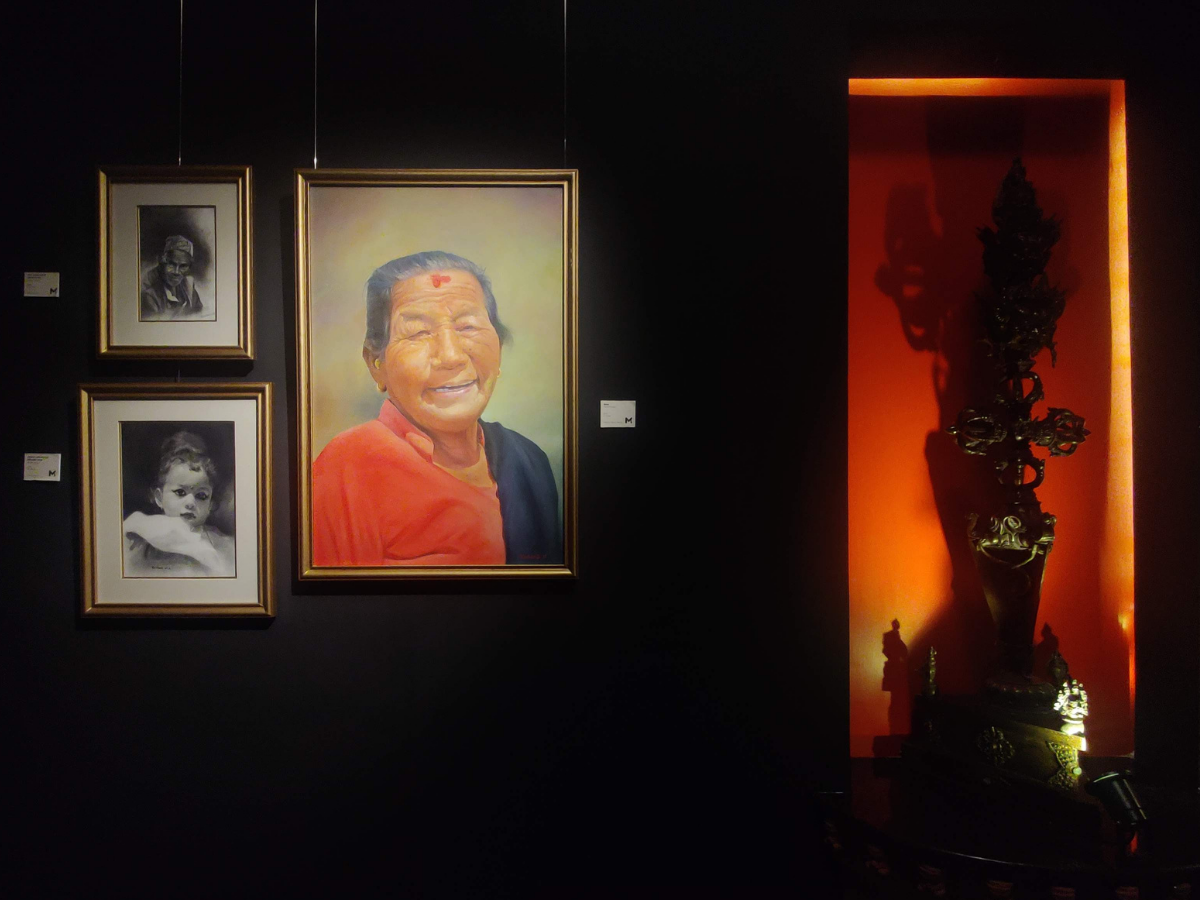
Descending the stairs, it is hard to tell if we are in Nepal or an international location.
The rectangular basement has been artfully divided into five sections with the black and red walls displaying a variety of artworks spotlighted from above. Irrespective of turning left or right inside the space, you wouldn’t be surprised to find a statue in the centre surrounded by oil paintings or sketches of different artists. The silence of contemplating patrons combined with the soft murmur of discussions bring alive this modern yet traditional space.
Museum of Nepali Art (MoNA), located in Thamel, is the creation of Rajan Sakya who is also the CEO of the Kathmandu Guest House (KGH) group. Opened in February 2020, the museum features artworks from Sakya’s private collection housing the best works that have been created in the past four to five decades. Being Nepal’s first private traditional and contemporary art museum (not a gallery, as corrected by Sakya), it has been entirely dedicated to living artists of the country.
Explaining about the differences between museums and galleries Sakya said, “Galleries sell [artworks] but in a museum, we don’t sell. It is only for display.”
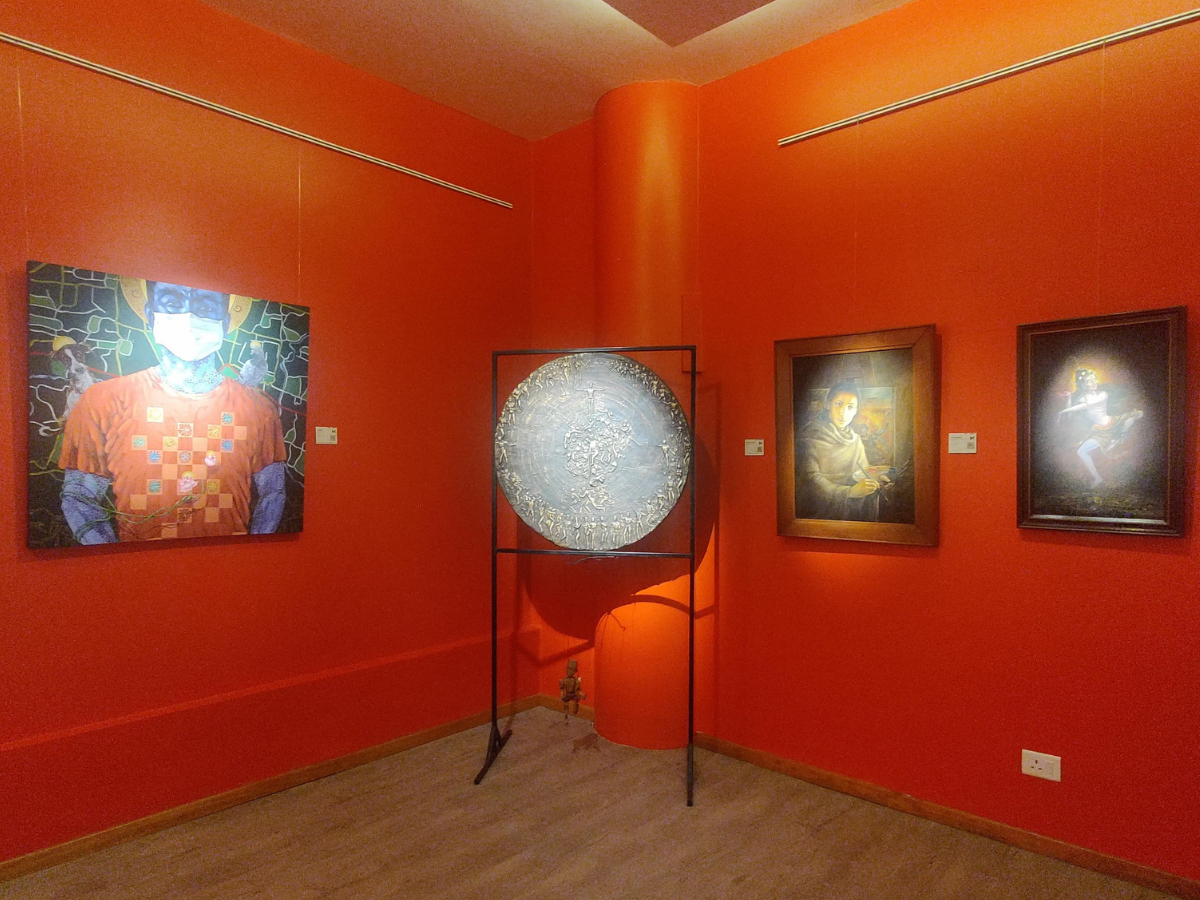
The history of Nepali art can be traced back to the Lichchhabi period, which is considered the golden age of the art scene in the country. During that time, religious works like manuscripts, illumination, mandala, wall painting and narrative scroll painting showed deities and human figures.
Between 1846-1950, the Rana autocracy saw a shift in the art scene with the emergence of European-inspired portraits of the Rana rulers and their family members, landscape oil paintings displaying hunting scenes and still-life paintings. The modernity that crept into Nepali art was also evident with increasing works depicting the urban life of the local community.
After the fall of the Rana regime, formal art institutions were formed by the Shah government. Many artists returned after studying abroad bringing their knowledge and exposure to the Nepalese audience. With globalization increasing the exchange of ideas and traditions, the popularity of Nepali artists around the world rose.
“All the great art that is created in Nepal usually gets sold to international buyers and then it disappears," Sakya told NepalMinute. "We don’t even get to see it.”
But MoNA intends to change that. They want to showcase the works created by the Nepalese artists to the people of the community and offer us a new appreciation for our culture and tradition. “Our contribution to the Nepalese people and the world is not only Himalayas, temples or cultural heritage, but also art,” said Shakya.
Living artists and Nepali traditions
The first wall, right at the end of the entrance stairs, features a 178*132cm “Teaching of Buddha” oil painting by Samundra Man Singh Shrestha that portrays Lord Buddha imparting his knowledge to Bodhivastva Vajrapani in the forefront. In the background are other deities who sit by, listening and learning from the interaction.
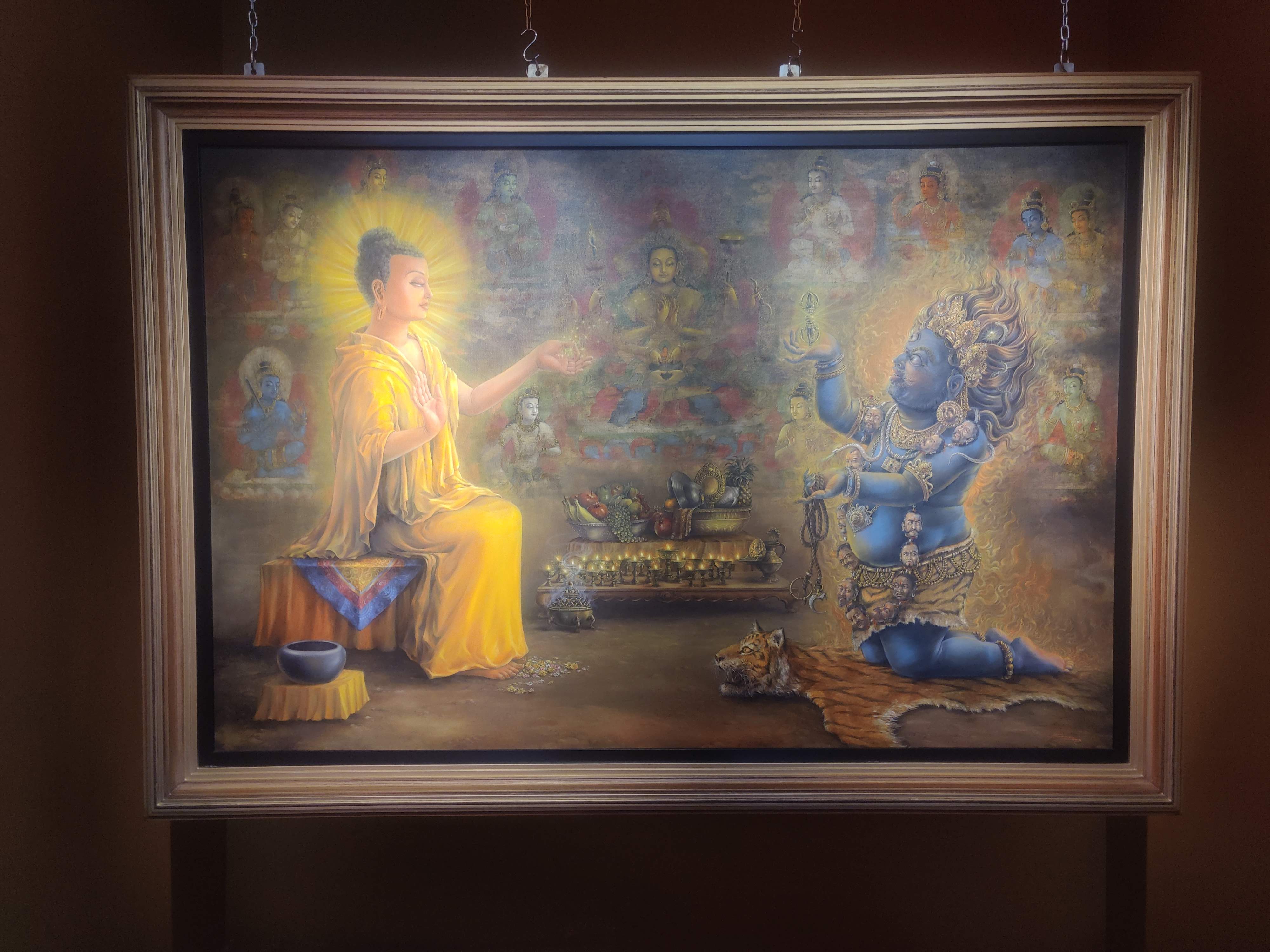
Shrestha completed this work in 2020, which took around a year. The inspiration struck him one day when he was reading a book which showed that Vajrapani was requesting Buddha to teach him. “I thought it was a unique story. Therefore, this painting is my perception of how the lessons would have taken place,” said Shrestha.
Most museums around the world display artworks after the artist has passed away. But MoNA falls under the category of one of the few museums dedicated to living artists, according to Sakya. “The importance of this museum is that 99 per cent of all the artwork in the museum belongs to a living artist.”
What is the reason? Jenisha Maharjan, manager at MoNA, told NepalMinute: “We want them to enjoy their glory and fame while they are still alive. Because we have a very bad habit of saying how good a person was only once he passes away.”
Shrestha too agrees. “A museum like this does provide support to living artists. Furthermore, this is also a place for people without the knowledge of art to see and understand it.”
He also believes that the government should open more spaces like MoNA. “Many places have been made by individuals. But how much can an individual expand?”
While immersing in the contemporary and traditional artworks displayed at the museum, it is hard to miss out the multiple- symbols-painted black curtain on a wooden carved door standing at one side of the museum.
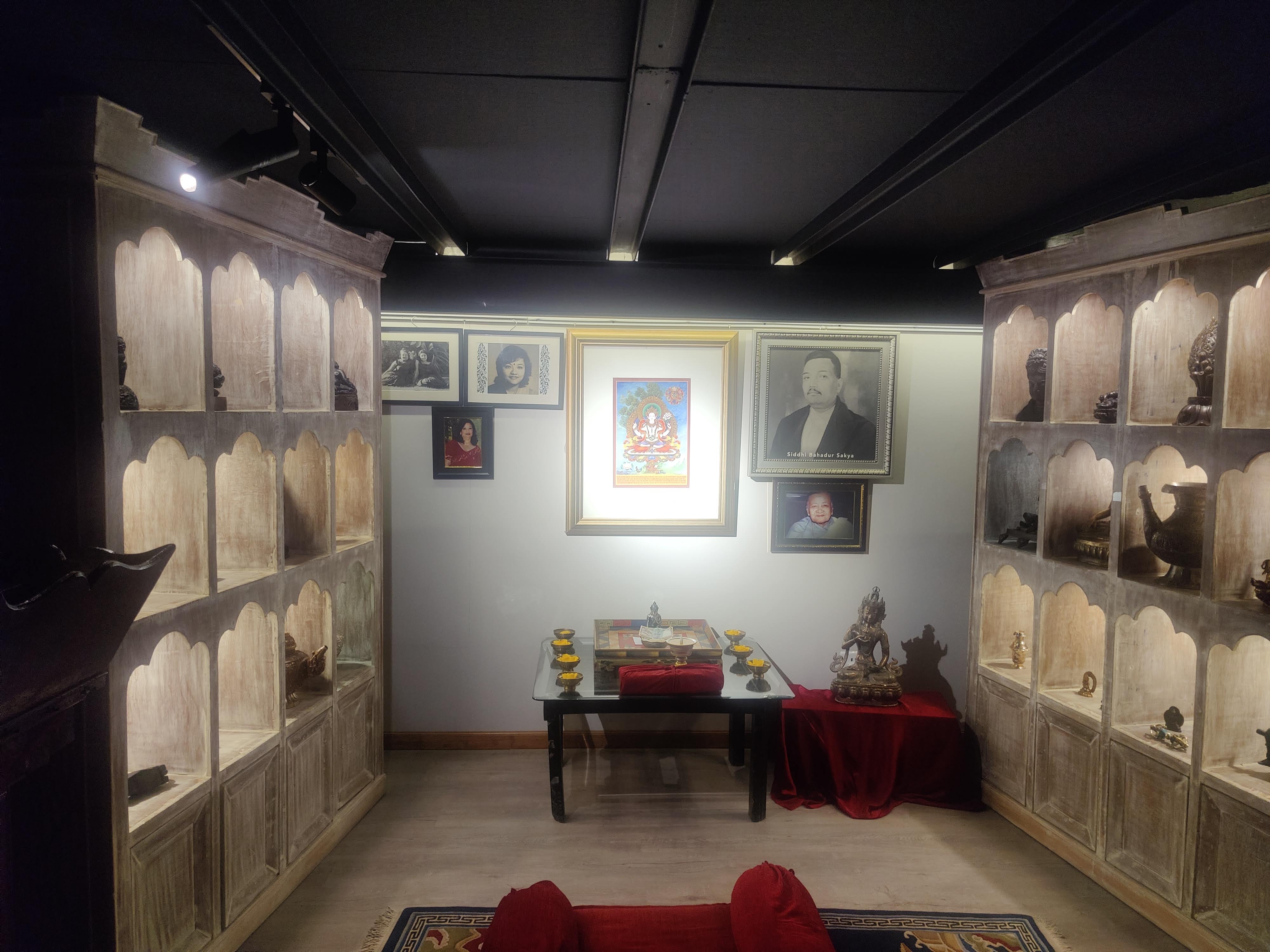
Pulling the curtain aside, you are greeted with a traditional temple found in Newari homes. Between two wooden cabinets of varied statues and objects is a painting of the main deity on the wall. The painting has been made following all the traditional protocols like a priest drawing grid line, the artist purifying himself before sitting down to work and not eating before or while working on the painting.
“This is one culture that is dying. So, if we were to tell a story about it, this is where we could give a live example,” said Maharjan.
Beyond the museum
The physical museum is only about five per cent of the work that MoNA does, according to Sakya. “Our main aim is to educate the young generation about art. I want to make art a conversation and a way of life.”
To fulfil his mission, he has turned one of his hotel buildings on the same property into an art house. Artists can hire one of the 13 rooms to work or show their creations. Therefore, any enthusiast wanting to learn more about a specific artist or view their work can visit the room in this art house.
“The art house is the first step to creating an art district in Kathmandu,” said Maharjan.
Furthermore, the art-house has a giant mural being painted on one of its walls by Kiran Maharjan, who goes by the street name ‘H11235’. The mural that showcases the origin and establishment of Thamel will be unveiled on July 16 in an invitation-only event.
On the same day, the museum will also display a new collection by two artists, Sushila Singh and Raj Prakash Tuladhar. It will available for public viewing from July 17 to July 30.
“We are creating an art revolution within the country so that the young people can be proud of the culture and the heritage,” said Sakya.
